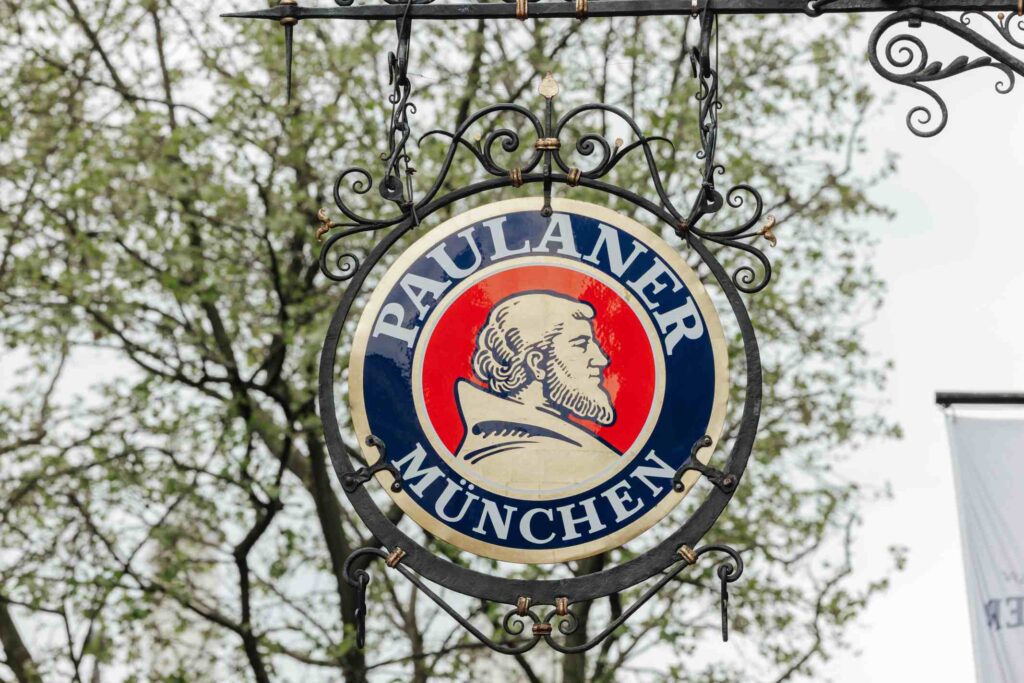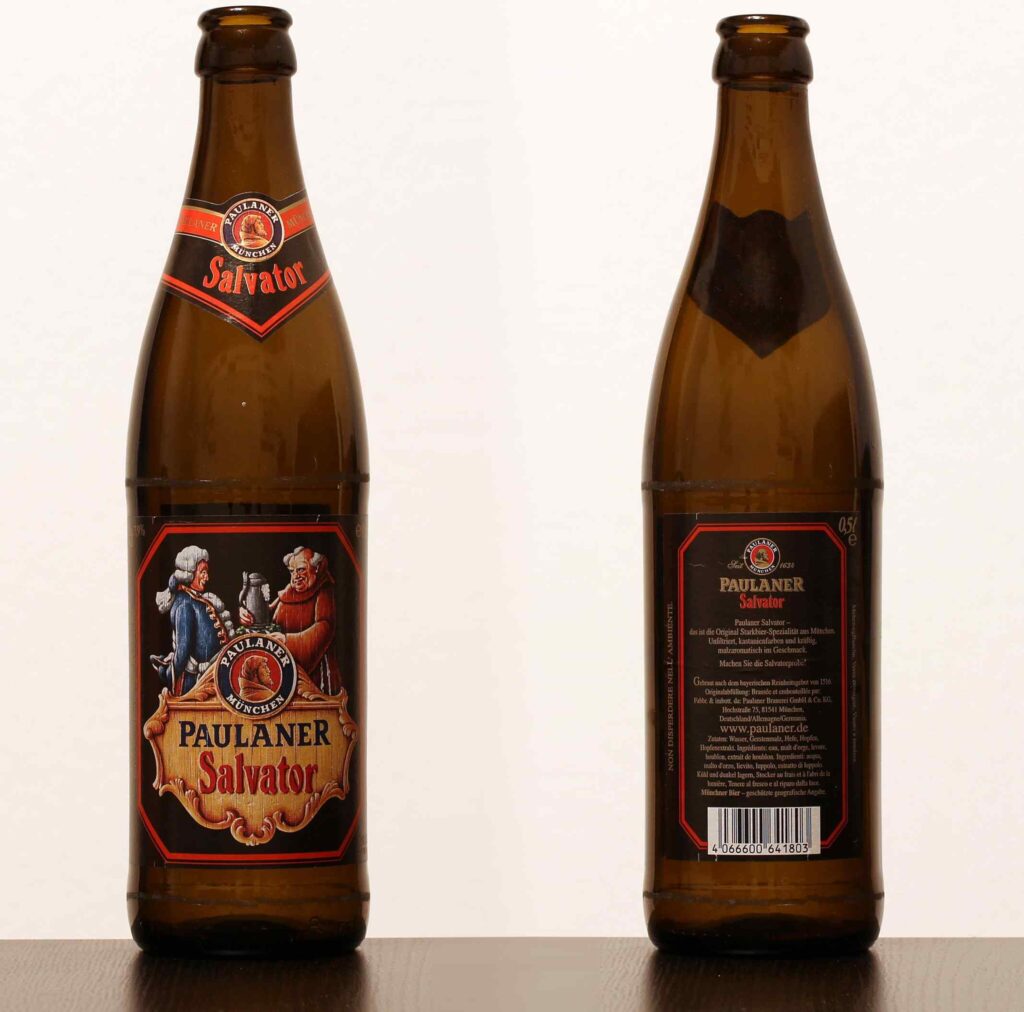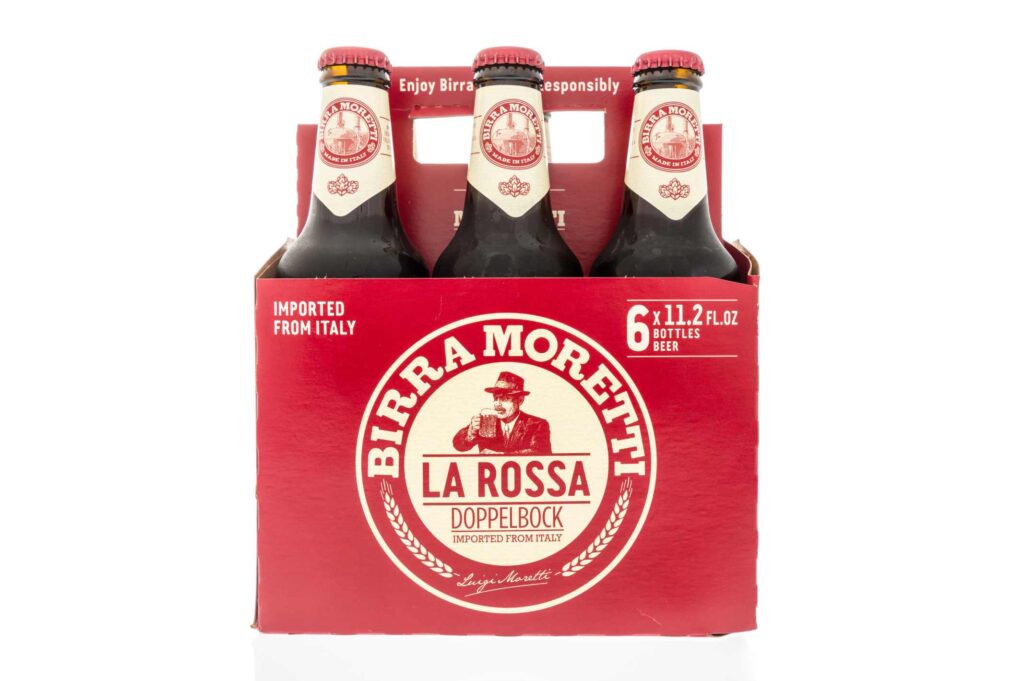What is Doppelbock? In this article, you will learn interesting facts about Doppelbock.
Doppelbock is a rich and flavorful style of beer, originally hailing from Germany. Known for its intense maltiness and subtle hop bitterness, it is often associated with a deep history that spans centuries. First introduced by monks at St. Francis of Paula, Doppelbock has become a beloved beverage around the world, gaining recognition for its unique flavors and strength.
The appearance of Doppelbock beers varies from deep gold to dark brown hue, with good clarity and medium-light to medium carbonation. They commonly have an alcohol content ranging from 7.5% to 9.5%, making them an ideal choice for those seeking a more robust and complex beer experience. Paired well with strong and savory dishes, Doppelbock complements foods like venison, brie, or havarti cheese, as well as rich desserts such as crème brûlée and tiramisu.
When brewing a Doppelbock, the lagering process requires at least three months to achieve the desired taste and texture. The end result is a medium-full and smooth beer, often described as having flavors of roasted grains, nuts, dark raisins, and pumpernickel toast.
As you explore the nuances of this extraordinary style of beer, you’ll undoubtedly be impressed by its rich history and enticing taste.
Table of Contents
History and Origin

Doppelbock, a German beer style, has an intriguing history that traces back to the 17th century. It was first introduced by monks at St. Francis of Paula in Munich, who used the beer as a means to sustain themselves during the Lenten season. The word “Doppel” refers to the double strength of the beer, making it a hearty and robust version of traditional Bavarian-style bock beers.
The Paulaner monks from Italy are credited with the founding of the Paulaner Brewery in Munich during the mid-15th century. The brewery gained fame for its traditional Bavarian-style beers, including lagers, wheat beers, and seasonal specialties. One of its most popular beers, Salvator, is a Doppelbock that has been brewed for over 375 years.
During Lent, the monks would fast and abstain from solid food, relying on the nourishing qualities of Doppelbock to sustain them. Due to its hearty taste and high energy content, Doppelbock became known as “liquid bread.” The brewing monks of St. Francis of Paula played a significant role in solidifying Doppelbock’s place in the beer world.
The introduction of Doppelbock in Munich led to the evolution of new styles, with its modern form derived from the earlier bockbiers of Bavaria. The roots of Doppelbock, however, can be traced back even further, to the Bock styles that originated in Einbeck during the 1300s.
Today, the Paulaner Brauerei continues to produce and distribute Doppelbock throughout Germany and beyond. This rich history of Doppelbock and its connection to monastic brewing showcases its unique position as beer that has played a vital role in both tradition and sustenance.
Characteristics and Flavors
Doppelbock is a strong, rich, and very malty lager originating from Bavaria, Germany. Traditionally brewed in winter and served in spring, this hearty beer has been referred to as “liquid bread” due to its high alcohol content and rich, malty flavor profile. Doppelbocks typically have an ABV ranging from 7% to 12%, which contributes to the warming sensation that this beer is known for. The style has low IBUs, typically between 16 to 26, which means there is very little hop bitterness present.
The maltiness of Doppelbock puts the emphasis on flavors such as caramel, chocolate, and toasted notes. The color of a Doppelbock can vary from deep gold to dark brown, with darker versions often displaying ruby highlights. Some versions of Doppelbock also feature a more amber or copper hue, but regardless of the color, the malt character is predominant and complex.
The mouthfeel of a Doppelbock is typically medium to full-bodied, with a smooth texture and noticeable warmth from the alcohol content. The finish is generally clean, with a slight sweetness balanced by a mild astringency. Hop flavors and aromas are not pronounced in Doppelbock – instead, brewers focus on the rich and diverse malt flavors that define the style.
Some iconic examples of Doppelbock include Salvator and Celebrator – both dark, rich lagers embodying the traditional characteristics of the style. These beers showcase the depth and variety of malt flavors, ranging from caramel and nutty notes to more profound coffee and chocolate nuances. Such complexity is a testament to the skill and craftsmanship of the brewers who have dedicated themselves to mastering the art of Doppelbock brewing.
In conclusion, Doppelbock is a unique and cherished beer style that offers a rich and robust flavor experience. Its considerable maltiness, diverse flavor profile, and smooth mouthfeel make it a popular and satisfying choice for beer enthusiasts across the globe.
Popular Doppelbock Beers

Doppelbock beers are a sub-category of the bock style, known for their rich and weighty lagers characterized by intense malty sweetness and a note of hop bitterness for balance. They were originally made by monks in Munich and have become a very food-friendly choice with a rich, toasted bread flavor profile. Some popular Doppelbock beers include:
- Celebrator Doppelbock: This full-bodied beer boasts a deep, dark color and a rich, malty flavor with hints of chocolate, toffee, and dried fruit. It’s well-balanced with a smooth finish, making it a great choice for those who enjoy indulging in complex beers.
- Spaten Optimator: This Bavarian classic has a deep amber color and a robust, malty profile. Its caramel and toffee notes, along with a hint of herbal hops, create a satisfying and smooth taste.
- Paulaner Salvator: Often regarded as the original Doppelbock, this beer displays a dark copper color and combines caramel maltiness with a subtle hop bitterness for a balanced flavor.
- Samuel Adams Double Bock: A rich, malty lager with a caramel sweetness and hints of dark fruits, this American take on the Doppelbock style is great for those looking to explore beyond traditional offerings.
- Weihenstephaner Korbinian: This German Doppelbock has a full-bodied, dark, malty flavor with notes of toffee, chocolate, and dried fruit. Its smooth finish creates a pleasurable drinking experience.
- Troegenator: A bold and complex beer, Troegenator blends flavors of chocolate, caramel, and dried fruit with a slight hop bitterness for a well-rounded taste.
- Samichlaus Classic: Brewed only once a year, this is a unique doppelbock with exceptionally high alcohol content and a rich, sweet taste that’s perfect for sipping.
- Consecrator: A copper-colored doppelbock with a malty aroma and flavors of caramel, toasted bread, and a slight hop bitterness.
- Doppelbock Dunkel: A dark brown doppelbock offering rich, malty flavors with notes of chocolate and roasted malt.
- Duck-Rabbator: A complex brew with a combination of toasted bread, caramel, and dried fruit flavors, rounded out by a hint of hop bitterness.
These are just a few examples of the many diverse and flavorful Doppelbock beers available. Whether you choose to delve into their history or simply enjoy their rich, malty goodness, these beers offer a satisfying and memorable experience.
Brewing Process and Ingredients
Doppelbock is a German beer style known for its intense malty sweetness and full-bodied character. The brewing process involves a few key steps and ingredients that give the beer its distinct flavor profile and rich, dark color.
The grain bill for Doppelbock typically consists of a base malt such as Munich malt, with the addition of specialty malts like pale, roasted, and toffee malt for added complexity. Wheat and barley may also be used in varying amounts, depending on the specific recipe. The maltiness in Doppelbock is often described as “liquid bread,” with bready and toasted bread flavors being prominent.
The color range of Doppelbock can vary from golden to dark brown, with hints of ruby highlights. This color variation is achieved through the use of different specialty malts that contribute to the beer’s appearance and flavor.
The mash process for Doppelbock often involves a decoction mash, which is a traditional technique that involves boiling a portion of the mash and then returning it to the main mash to raise the temperature. This process enhances the malty flavors and contributes to the rich color of the beer.
Fermentation for Doppelbock typically occurs at lower temperatures, as it is a lager-style beer. This results in a cleaner, more refined flavor profile with minimal esters and diacetyl. The attenuation, or how much sugar is consumed by the yeast, is typically on the lower side, as Doppelbocks are known for their residual sweetness.
Hop bitterness is present in Doppelbock but is usually moderate and balanced with the beer’s malty sweetness. Some popular hop varieties used in brewing Doppelbock include Saaz, Perle, and Northern Brewer. The aroma produced during the brewing process may feature hints of chocolate, dark fruit, light caramel, and toasty notes.
Eisbock is a unique variation of the Doppelbock style, where the beer is frozen, and water is removed to concentrate the flavors and increase the alcoholic strength. This process results in a more intense and full-bodied beer with richer dark fruit and raisin flavors.
Overall, the brewing process and ingredients used in producing Doppelbock contribute to its reputation as a complex, full-bodied, and malty-sweet beer style, perfect for those looking for something rich and satisfying with a confident, knowledgeable, and clear brewing process.
Pairing and Serving Suggestions

Doppelbock is a delicious and rich beer that lends itself well to pairing with hearty foods and specific glassware. It’s a strong, malty German-style lager that’s typically copper to dark brown in color and exhibits great clarity. With its complex flavor profile and distinctive mouthfeel, you can confidently and knowledgeably serve this beer to elevate your dining experience.
The best type of glassware for Doppelbock is a tulip glass. This particular glass shape enhances the beer’s aroma while maintaining its head and temperature. You should serve Doppelbock at around 45-50°F, which ensures its flavors and aromas are optimally expressed.
When it comes to food pairing, Doppelbock’s robust flavors complement a variety of dishes. Its sweet and malty profile pairs exceptionally well with game meats like venison or bold, rich dishes such as roast pork or ham. The complex malt backbone in this beer comes from quality ingredients like pilsner malt and darker malts such as carafa, which primarily contribute to the caramel, toffee, and chocolatey notes.
Don’t be afraid to experiment with pairing Doppelbock with strong, nutty cheeses that can stand up to its rich flavors. Additionally, its sweetness and low hop content allow it to pair surprisingly well with desserts, especially those featuring chocolate, like German chocolate cake or dark chocolate truffles.
In conclusion, Doppelbock is a versatile beer with a rich, malty profile that makes it perfect for pairing with a variety of foods. By serving it in a tulip glass and at the appropriate temperature, you truly showcase this beer’s exceptional qualities and make any gathering memorable.



